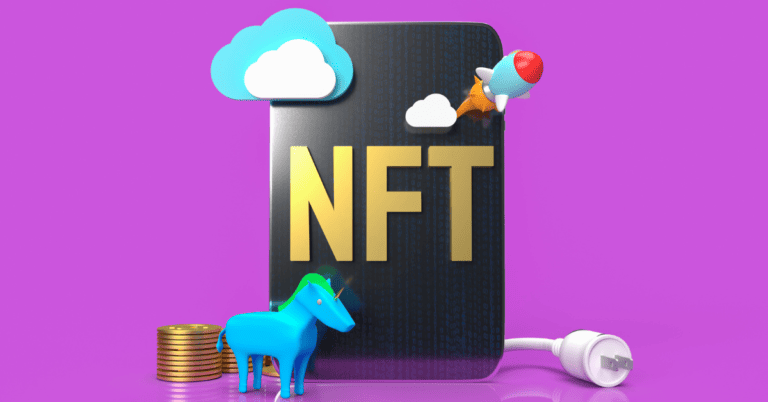When discussing major blockchain initiatives, Bitcoin is often overlooked due to beliefs that its proof-of-work consensus mechanism makes it costly and environmentally unfriendly for new projects.
However, in 2023, the Bitcoin ecosystem gained significant attention with the launch of the Ordinals Protocol, which enabled the minting of NFTs, and the BRC-20, which facilitated the launch of new tokens.
This year, another initiative, the Runes Protocol, is gaining traction.
Table of Contents
What is Runes Protocol?
Developed by Casey Rodarmor, who also created the Ordinals Protocol, Runes is a fungible token protocol for the Bitcoin network.
“I’m not sure creating a new fungible token protocol for Bitcoin is a good idea. Fungible tokens are 99.9% scams and memes. However, they don’t appear to be going away any time soon, similar to the way in which casinos don’t appear to be going away any time soon. Creating a good fungible token protocol for Bitcoin might bring significant transaction fee revenue, developer mindshare, and users to Bitcoin.”
Casey Rodarmor
Quick Guide to Ordinals
The Ordinals Protocol uses “inscriptions” to create sequentially numbered satoshis to generate distinctive digital artifacts, or what we know as NFTs on Bitcoin, that can be held and transferred across the network.
Read: What is Ordinals Bitcoin NFT | NFTs on Bitcoin Sparks Debate
The numbering scheme, known as Ordinal Theory, was the basis for the BRC-20 fungible token standard, introducing alt and meme coins to the network. However, the complexity of the standard, requiring users to first mint an Ordinal to create a BRC-20-compatible token, has led to criticisms. Despite the introduction of another protocol, the ORC-20, some users remain dissatisfied with the ease of producing Bitcoin-based fungible tokens.
Quick Guide to Runes Protocol
The Runes Protocol, described as “more lightweight and malleable” and “working better” than the BRC-20 by an Ordinals marketplace, aims to improve efficiency in using Unspent Transaction Output (UTXO) on the network.
Bitcoin uses a UTXO model, where the input of a transaction is deleted and an output is generated, known as UTXO, representing the amount of $BTC remaining after a transaction.
Rodarmor advocates minimizing the UTXOs produced when launching fungible tokens on the Bitcoin network, which is expected to ease the process:
“What would a simple, UTXO-based fungible token protocol with a good user experience for Bitcoin look like? Here’s one, called ‘runes,’ because it sounds cool.”
Casey Rodarmor
With the creation of this new protocol, many projects have emerged to adopt and utilize Runes. Speculation also rises that once the much-anticipated Bitcoin Halving occurs, Runes will be among the top initiatives to emerge.
List of Ordinals-Based Projects that have already adopted Runes
Here is a list of Ordinals-based projects that have already adopted Runes, expressed their desire to adopt Runes, or are speculated to adopt Runes, as curated by the online publication Decrypt.
Runestone
Runestone (https://www.ord.io/63140674) was among the early adopters of the Runes Protocol. In March, this project mined “the largest Bitcoin block in history and inscribed the largest inscription ever,” which they named The Runestone. It was subsequently auctioned, and the team hinted that the proceeds would support an airdrop campaign to reward users of the Runes protocol.
BitPinas has created a guide for its airdrop: Runestone Airdrop – Bitcoin Ordinals Project 101.
RSIC Metaprotocol
The RSIC Metaprotocol (https://www.ord.io/57066799) is another project that has shown interest in adopting Runes. It currently features a gamified campaign for Rune distribution. Notably, this project had its airdrop in January, distributing 21,000 inscriptions to Ordinals holders.
Ordinal Maxi Biz
Ordinal Maxi Biz (https://magiceden.io/ordinals/marketplace/omb) is a collection speculated to adopt Runes, largely because it was one of the early adopters of Ordinals.
OnChainMonkey
OnChainMonkey (https://onchainmonkey.com/) has been a prominent part of the Ethereum ecosystem. With the launch of the Ordinals protocol, it allowed its community to migrate their NFTs between Ethereum and Bitcoin. It also achieved the distinction of the first-ever 10K collection inscribed on Bitcoin. The community is now speculating that it may also adopt Runes.
Bitcoin Puppets
Bitcoin Puppets (https://magiceden.io/ordinals/marketplace/bitcoin-puppets) is a collection born and raised on the Ordinals protocol and is considered one of the most unique projects in the Bitcoin ecosystem. Recently, Rune Pups (https://magiceden.io/ordinals/marketplace/runes_pups), a sub-collection of Bitcoin Puppets, was airdropped to its holders. This development has led to speculation about the emergence of a Rune-based collection.
Taproot Wizards
Taproot Wizards (https://taprootwizards.com/) is a collection of “magic internet JPEGs” inscribed on the Bitcoin blockchain. The tagline on its website is “Make Bitcoin Magical Again.” The project recently launched a sub-collection called Quantum Cats, one of the largest Ordinals collections, leading to community speculation about its adoption of Runes.
NodeMonkes
NodeMonkes (https://magiceden.io/ordinals/marketplace/nodemonkes) are considered the CryptoPunks of the Ordinals ecosystem, notable for their popularity and distinctive concept. Given its status as a major project, the community views NodeMonkes as a likely future adopter of Runes.
This article is published on BitPinas: Bitcoin Runes 101 and Ecosystem Guide
Disclaimer:
- Before investing in any cryptocurrency, it is essential that you carry out your own due diligence and seek appropriate professional advice about your specific position before making any financial decisions.
- BitPinas provides content for informational purposes only and does not constitute investment advice. Your actions are solely your own responsibility. This website is not responsible for any losses you may incur, nor will it claim attribution for your gains.
- SEO Powered Content & PR Distribution. Get Amplified Today.
- PlatoData.Network Vertical Generative Ai. Empower Yourself. Access Here.
- PlatoAiStream. Web3 Intelligence. Knowledge Amplified. Access Here.
- PlatoESG. Carbon, CleanTech, Energy, Environment, Solar, Waste Management. Access Here.
- PlatoHealth. Biotech and Clinical Trials Intelligence. Access Here.
- Source: https://bitpinas.com/learn-how-to-guides/bitcoin-runes-101/
- :has
- :is
- :not
- :where
- 000
- 10K
- 2023
- 35%
- a
- About
- achieved
- across
- actions
- adopt
- adopted
- adopters
- Adopting
- Adoption
- advice
- advocates
- After
- again
- aims
- airdrop
- airdropped
- allowed
- already
- also
- among
- amount
- an
- and
- Another
- any
- appear
- appropriate
- ARE
- article
- AS
- attention
- Auctioned
- away
- basis
- BE
- because
- been
- before
- beliefs
- between
- Bitcoin
- Bitcoin Blockchain
- Bitcoin halving
- Bitcoin Network
- BitPinas
- biz
- Block
- blockchain
- born
- bring
- BTC
- by
- called
- Campaign
- CAN
- carry
- Casinos
- Cats
- claim
- Coins
- collection
- collections
- community
- complexity
- concept
- Consensus
- consensus mechanism
- considered
- constitute
- content
- Cool
- costly
- create
- created
- Creating
- creation
- criticisms
- cryptocurrency
- CryptoPunks
- curated
- Currently
- decisions
- described
- desire
- Despite
- Developer
- Development
- digital
- diligence
- discussing
- distinction
- distinctive
- distributing
- distribution
- does
- Dont
- Drops
- due
- Early
- early adopters
- ease
- ecosystem
- efficiency
- emerge
- emerged
- emergence
- enabled
- entry
- environmentally
- essential
- ethereum
- Ethereum ecosystem
- EVER
- expected
- experience
- expressed
- facilitated
- Features
- fee
- financial
- First
- first-ever
- For
- Fungible
- future
- gained
- gaining
- Gains
- gamified
- generate
- generated
- given
- going
- good
- guide
- had
- Halving
- Have
- Held
- history
- holders
- However
- HTTPS
- idea
- improve
- in
- Informational
- Initiative
- initiatives
- input
- interest
- Internet
- introducing
- Introduction
- investing
- investment
- IT
- ITS
- January
- Know
- known
- largely
- largest
- launch
- launched
- launching
- leading
- Led
- lightweight
- like
- likely
- List
- Look
- look like
- losses
- major
- MAKES
- Making
- many
- March
- marketplace
- max-width
- May..
- mechanism
- meme
- Meme Coins
- memes
- might
- migrate
- mined
- minimizing
- mint
- minting
- model
- most
- much-anticipated
- Named
- network
- New
- NFT
- NFT trading
- NFTs
- notable
- notably
- now
- numbered
- of
- often
- on
- once
- ONE
- online
- only
- or
- out
- output
- own
- part
- plato
- Plato Data Intelligence
- PlatoData
- popularity
- position
- Post
- proceeds
- process
- Produced
- producing
- professional
- project
- projects
- prominent
- Proof-of-Work
- protocol
- provides
- Publication
- published
- purposes
- Quantum
- raised
- recently
- remain
- remaining
- representing
- responsibility
- responsible
- revenue
- Reward
- Rises
- RUNE
- satoshis
- scams
- scheme
- Seek
- shown
- significant
- similar
- Simple
- solely
- some
- soon
- sounds
- Sparks
- specific
- speculation
- standard
- Status
- Subsequently
- support
- sure
- team
- than
- that
- The
- their
- theory
- they
- this
- time
- to
- token
- Tokens
- top
- traction
- Trading
- trading volume
- transaction
- transferred
- unfriendly
- unique
- User
- User Experience
- users
- uses
- using
- utilize
- views
- volume
- was
- Way..
- we
- Website
- What
- when
- which
- WHO
- will
- with
- would
- year
- You
- Your
- zephyrnet















